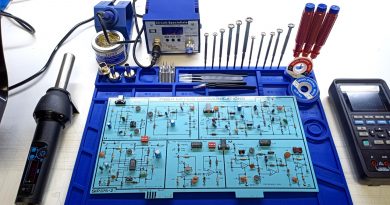Locating Dead Animals in an HVAC Duct Using an Inspection Camera
Chances are when you locate a foul smell coming from the ceiling that worsens over time, you most likely have a dead rodent trapped somewhere within the air conditioning ductwork. Mice, rats, and squirrels inhabit air ducts because they are cool in the summer and warm in the winter. In addition, the ductwork offers protection from predators. Furthermore, air conditioning ducts are close to food sources within your home.
If you suspect there is a dead animal in your ductwork that you want to remove yourself, you will have to identify it first, which is easy to accomplish with an inspection camera.
You will or may need a screwdriver, flashlight, inspection camera, vacuum with hose attachment, rubber gloves, a trash bag, and disinfectant.
Start by removing the return air grates and vents with a screwdriver in the room where the smell is strongest. You should be able to find the general area of the carcass by smell alone. Relying on your nose will give you a good starting point.
Use your flashlight to illuminate the inside of the vent openings for a quick inspection of the ductwork. Because twists and turns are common in HVAC ducts in order to accommodate vents in other rooms, you will only be able to see a limited section of the ductwork. If you get lucky and the carcass is near the vent, you may stumble on it by merely shining your flashlight on a small section of the ductwork, saving you from having to use the inspection camera.
If by now you haven’t found the carcass, insert the camera shaft of the inspection camera into the ceiling or floor vents and turn it on. Steadily feed the camera shaft into the vent while monitoring the display in order to determine the precise location of the animal’s carcass. This step may take several minutes; you may also have to insert the inspection camera in more than one vent opening.
Once you have identified the location of the carcass, place an extension attachment on your vacuum hose and turn the vacuum on. Slide the attachment into the vent opening closest to the carcass to draw it near the opening with the vacuum’s suction power.
When the carcass is within in reach, turn the vacuum off and put on your rubber gloves. Remove the carcass from the air duct and place it in the trash bag. Finish by spraying disinfectant in the ductwork.
